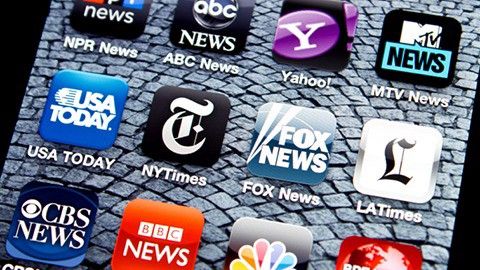How phones are used in other countries?
Chinese use their phones the shortest time in a day, but download the most apps. Brazilians stare at their phones the longest, even though they often share a device with several family members, and Americans buy phones from as young as 3 years old. Experts from Digital Care Group – the largest provider of services for mobile devices on the Polish market – presented the most interesting habits of various nations related to cell phone use.
There are approx. 6.2 billion cell phones 1 – according to data from the International Telecommunications Union at the UN. According to other data, more than half – 3.2 billion, are smartphones, and by 2023. the number of all devices is expected to grow to over 7 billion. However, not every citizen of the world has a cell phone. About 1.1 billion of the world’s poorest people do not have access to electricity. According to ITU 2, in countries such as. Zambia and Kenya, only about half of the population has a phone, and the organization has detailed data for only 64 of the 195 countries that exist today.
Regardless of nationality and wealth, the telephone is used by consumers in different parts of the world to contact their loved ones, run daily errands and entertain themselves. Browsing through your cell phone has become not only a regular part of our day – the average person does it about once a week. 63 times a day.
Although so many cell phone usage habits are common among people living in different corners of the world, there is quite a bit of variation depending on longitude and latitude. We have collected the most interesting ones.
Record-breakers
Most devices are used in China, India, USA and Brazil, which is not surprising as these are the countries with the highest population. In the first two of these countries, the number of active devices exceeds one billion devices. 3 However, the results of a survey of American parents, which found that approx. 40 percent. of them provide their child with their first phone before the age of 10. 4 The youngest are gifted their own cell phone at age 3. This is a concern because, according to other statistics, nearly half of American adults admit to being addicted to their phone (47 percent.), feel anxious when their device’s battery drops below 20 percent. (48 percent.) and consider their phone the most valuable item. 5
With phone in hand
From data published this year by analytics firm Data.ai shows that daily phone usage in different countries can vary by up to 50 percent. The most “glued” to their cell phones are Brazilians and Indonesians, who spend on average 5.4 hours a day with a phone in their hand. The citizens of South Korea also spend the most time on the phone. – 5 hours, Mexicans – 4.8, Indians – 4.7 and Japanese – 4.6. Least, Chinese – 3.2 hours a day, Germans – 3.4, French and Argentinians – 3.6. 6
Different languages, different communicators
From the same study, we learn how national preferences for using apps on the phone. In terms of downloads from app stores, the Chinese are already leading the way, having downloaded a total of 98.4 billion apps in the past year, second-ranked India scored just 26.7 billion, and third-ranked USA – 12.2 billion.
The popularity of specific apps is of course also dependent on the generation in a given country. In European countries, the USA, Canada and Australia, representatives of generation Z most often use Instagram, TikTok and Spotify. In Japan, the same group of users mainly use local messenger LINE, Instagram and, interestingly, Twitter. In South Korea. Korean communication app KakaoTalk is the most popular, followed by Instagram and Facebook, which in European countries and North America is considered the favorite medium of millenials.
Representatives of this generation in Europe, the US and Canada also prefer using Facebook Messenger and WhatsApp, which completely distinguishes them from Asian millenials. Those in Japan use Facebook second only to Amazon’s app. For Koreans the number 1 is the local version of Google’s browser – Naver and the online store Coupang.
Among dating applications Tinder is the leader. This is where citizens of most countries in the Americas and Europe are most likely to log on. There is more diversity in Asian countries. Chinese people date through Soul, Koreans through WIPPY, Indians through CuteU, and citizens of Thailand, Malaysia and Taiwan look for companionship in Omi application.
Access to the network is a must
Individual countries also differ considerably in their approach to other cell phone usage habits due to local economic or cultural conditions, as well as in terms of the price of telecommunication services. According to research firm eMarketer, in Brazil many families share one device, and 60 percent of. Internet users in the country use the web exclusively on their phones.
The cost of Internet access is not determined solely by the economic condition of the country as a whole, but also by the sophistication of the network infrastructure. This is why in the top group of countries with the lowest cost of 1GB of Internet data 7 technologically developed Israel takes the first place – 0.05 dollars. More for transfer in 2021. The most expensive mobile phones were those in Kyrgyzstan ($0.15), Fiji ($0.19) and wealthy Italy ($0.27), where 1GB costs the same as in poor Sudan. The most expensive price for access to 1 GB of the network is in Equatorial Guinea ($49), the Falkland Islands ($45), Sao Tome ($30), St. Lucia ($30), and St. Vincent and the Grenadines ($30). St. Helena ($39) and in several other sub-Saharan African countries. The most expensive country in this list of Western Europe is Greece, where 1 GB of transfer costs about. 8 dollars.
“As Digital Care Group we operate on 12 markets in Europe, Asia and Africa. Having contact with new markets on different continents, we have become acquainted with many habits of local consumers and ways of organizing telecommunication market, which are completely different from our experience with Polish and European customers. In South-East Asian countries, such as Vietnam, it is popular e.g. Recharging pre-paid mobile phones every day with a small amount, the equivalent of approx. 1zł. When creating our products we always take into account the local specificity. “ – says Igor Zdziarski, head of the team responsible for the Asian market at Digital Care Group.





